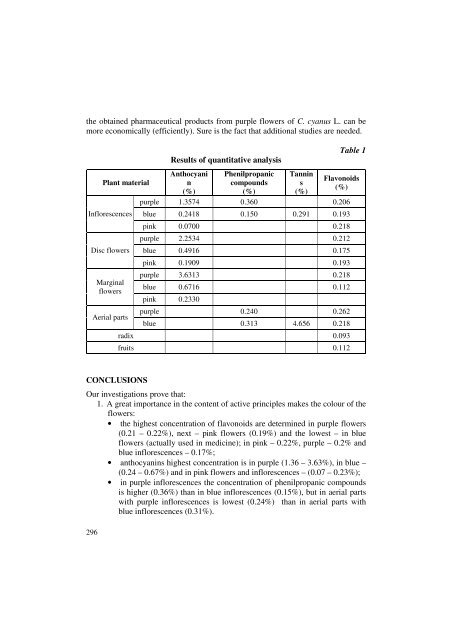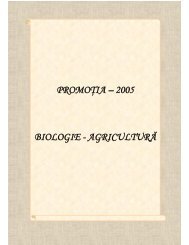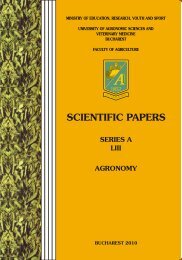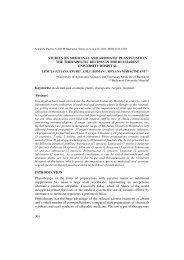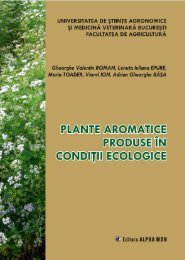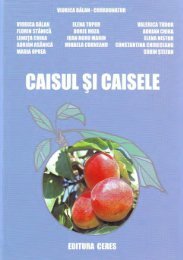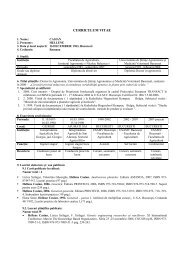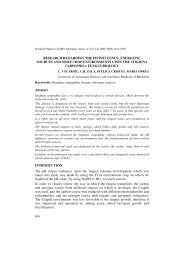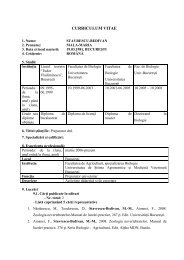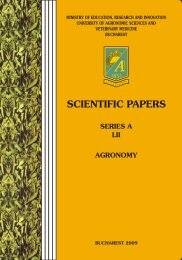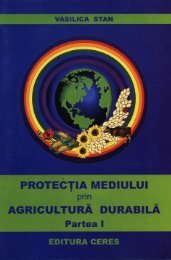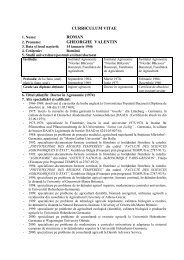phytochemical study of centaurea cyanus l
phytochemical study of centaurea cyanus l
phytochemical study of centaurea cyanus l
Create successful ePaper yourself
Turn your PDF publications into a flip-book with our unique Google optimized e-Paper software.
the obtained pharmaceutical products from purple flowers <strong>of</strong> C. <strong>cyanus</strong> L. can bemore economically (efficiently). Sure is the fact that additional studies are needed.Plant materialInflorescencesDisc flowersMarginalflowersAerial partsResults <strong>of</strong> quantitative analysisAnthocyanin(%)Phenilpropaniccompounds(%)Tannins(%)Table 1Flavonoids(%)purple 1.3574 0.360 0.206blue 0.2418 0.150 0.291 0.193pink 0.0700 0.218purple 2.2534 0.212blue 0.4916 0.175pink 0.1909 0.193purple 3.6313 0.218blue 0.6716 0.112pink 0.2330purple 0.240 0.262blue 0.313 4.656 0.218radix 0.093fruits 0.112CONCLUSIONSOur investigations prove that:1. A great importance in the content <strong>of</strong> active principles makes the colour <strong>of</strong> theflowers:• the highest concentration <strong>of</strong> flavonoids are determined in purple flowers(0.21 – 0.22%), next – pink flowers (0.19%) and the lowest – in blueflowers (actually used in medicine); in pink – 0.22%, purple – 0.2% andblue inflorescences – 0.17%;• anthocyanins highest concentration is in purple (1.36 – 3.63%), in blue –(0.24 – 0.67%) and in pink flowers and inflorescences – (0.07 – 0.23%);• in purple inflorescences the concentration <strong>of</strong> phenilpropanic compoundsis higher (0.36%) than in blue inflorescences (0.15%), but in aerial partswith purple inflorescences is lowest (0.24%) than in aerial parts withblue inflorescences (0.31%).296


